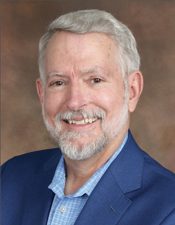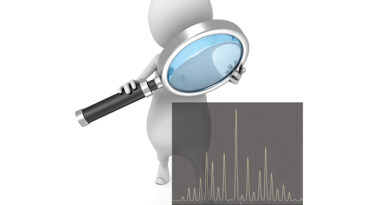1.8 GHz: A Peek Under the Hood
By Diana Linton & Ron Hranac
An important part of the DOCSIS® 4.0 specifications is support for expansion of the downstream spectrum’s upper frequency limit to 1794 MHz (aka 1.8 GHz). Informally known as “extended spectrum DOCSIS,” 1.8 GHz operation is called DOCSIS 4.0 frequency division duplexing (FDD) in the specification [1]. Several cable operators are making plans to migrate their networks to 1.8 GHz capability. Rather than focus on the how and why of such a migration, we’re looking under the hood, so to speak, at what manufacturers are doing or have done to make the pieces and parts of a 1.8 GHz network function over such a wide frequency range.
We spoke with several manufacturers to gather information for this article, and all emphasized the importance of attenuation, RF shielding, and impedance-versus-frequency.
Steady improvements have been made in semiconductor technology to achieve wider operating bandwidths and increased total composite power (TCP) capability. The magnetics – the toroidal transformers used in splitters, combiners, directional couplers, and test points – have been revised, as have AC bypass coils in line passives and actives. Even something as seemingly simple as modifying printed circuit board composition has been part of the 1.8 GHz recipe. In many instances details are proprietary, so our peek under the hood, understandably, avoids the recipe’s secret sauce.
Craftsmanship
All of the manufacturers with whom we spoke brought up craftsmanship, which is especially important as we increase the upper frequency limit to 1.8 GHz. For example, inadvertently scoring the center conductor when preparing coax for connectorization can affect attenuation greatly at higher frequencies. Also important: ensuring the dielectric material has been properly removed from the center conductor. Avoiding mistakes from the past and training of outside plant personnel will be critical (see [2] for more information).
RF shielding
Keeping leakage and ingress under control requires good shielding integrity across the entire operating frequency range. Manufacturers are aware of this, and have worked to ensure their products meet necessary performance to 1.8 GHz and beyond. Craftsmanship plays a big role here, too. Improperly installed and/or loose connectors, and incorrectly tightened active and passive device housing faceplates and lids can be problematic, especially above 1 GHz. Failure to follow the manufacturers’ guidelines for tightening active device housing bolts in the proper order and to recommended torque values could warp the housing and compromise the RF shielding.

Figure 1. The impedance of coaxial cable is related to the ratio of dimensions D/d and the dielectric constant (relative permittivity).
Coax
As coaxial cable manufacturers looked at expanding the upper frequency limit to 1.2 GHz, 1.8 GHz, and even higher (3 GHz!), the first step was ensuring that cables could be evaluated at those higher frequencies. New lab-grade test equipment was acquired, and automated test software was updated. Currently available foam dielectric cables were found to work well to 1.2 GHz and 1.8 GHz, especially parameters such as structural return loss (SRL). The good news here is that improvements made to foam dielectric coaxial cables in the 1990s to support 1 GHz operation also support operation to 1.8 GHz. Some of the changes made more than 30 years ago included improving the uniformity of the cable (physical dimensions of the center conductor, shield, etc.), the dielectric chemistry, and even the cable packaging [3].

Figure 2. Cutaway showing interior of a hardline coax splice.
For operation to 3 GHz some additional changes were made to production lines to achieve consistent SRL and attenuation performance. The type and composition of polyethylene used for the dielectric was found to be important. The dies that ensure proper center conductor diameter must be maintained to prevent microscopic scratches on the outer surface of the conductor, which can affect attenuation performance at higher frequencies.
Hardline coax shielding is more than sufficient to 1.8 GHz and beyond. Modern drop cable tri-shielding designs that have a folding short on the outer foil layer also work well.
While most existing foam dielectric coaxial cables should operate to 1.8 GHz and beyond (taking into account the higher attenuation at those frequencies), it is advisable to test older generations of cables, including non-foam dielectric designs, to verify performance characteristics above 1 GHz
The impedance of coaxial cable is closely related to the conductor dimensions shown in Figure 1, along with dielectric constant ε (similar principles apply to connectors and other components). Changing the ratio D/d and/or ε changes the impedance. As operational bandwidth increases, maintaining a uniform impedance becomes more difficult. See [4] for more information.
Connectors
To RF signals, an ideal connector should “look” like an ideal transmission line. That can be challenging, especially in hardline connectors. Figure 2 is a photo of a 1980s or ’90s vintage .750 splice machined to show the inside, which is a lot more complicated than one might think.
Fine-tuning internal physical dimensions and materials composition to maintain a more-or-less constant impedance throughout the length of hardline connectors, splices, and adapters was necessary. The center conductor length on male pin connectors has been standardized [5], to work with new center conductor seizure mechanisms in actives and passives. Why? If the center conductor is too long or short, that can impact higher frequency performance.
Modern feed-through male F connectors are usable to at least 1.8 GHz, assuming proper installation. The return loss of female F connectors in taps, barrels, ground blocks, drop passives and actives, filters, and CPE benefits from switching to a 360° center conductor seizure mechanism. The transition from chassis-type female F connectors to printed circuit boards is another area that needed improvement.
Taps and passives
Manufacturers are adjusting capacitive, resistive and inductive elements in line passives and taps to overcome electrical and mechanical factors that limit their operational bandwidth, including but not limited to:
- RF interaction between the make-before-break bypass line and the faceplate board. This can cause resonances above 1 GHz that impact the device insertion loss, limiting the operating bandwidth.
- Higher losses introduced by legacy ferrite materials used in toroidal transformers.
- The center conductor seizure mechanism used in legacy passives and taps can limit the bandwidth of the device.
In addition, vendors continue to research ways to support 1.8 GHz tap faceplate-only upgrades that could allow operators to maintain existing tap housings, and avoid tap re-splicing and replacement.
Drop passives were also updated with revised magnetics, printed circuit board composition, and other improvements (some proprietary) to operate over wider bandwidths.
Actives
1.8 GHz amplifiers must have much higher linear RF output capabilities and higher efficiency [6]. This is to enable cable operators to maintain existing amplifier spacing and to not exceed HFC power supply boundaries.
To support active upgrades while preserving existing spacing, semiconductor and active device vendors are developing innovative proprietary solutions. These solutions are crucial for upgrading the network to 1.8 GHz and transitioning to ultra-high-split operation, as they simplify installation and increase operational flexibility. Some examples include smart features such as auto-alignment to better manage TCP and optimize station performance; remote control support; power efficiency techniques to minimize power consumption; and implementation of field-upgradable or remotely-selectable diplexers that will allow changes to a network’s bandwidth splits.
Another important enhancement is the adoption of digital pre-distortion (DPD) techniques to significantly enhance RF output power efficiency and performance, providing highly integrated RF hardware and configurable software. DPD took longer to implement in the cable industry due to a series of challenges in the HFC network environment (see [7] for more details). Now, amplifier vendors are implementing DPD as a tool to optimize power and performance to support operation at 1.8 GHz.
TCP management will be more critical than ever, since amplifiers will be operating closer to the gain block’s maximum output capability. This leads to more distortion in the upper frequency range, and it makes the general 10log rule of noise addition unreliable for predicting RxMER at higher frequencies. Therefore, a comprehensive understanding of new amplifiers, and a complete performance characterization of those amplifiers will be essential for cable operators to make informed decisions around 1.8 GHz network hardware and upgrades. Metrics such as noise power ratio (NPR) will allow operators to better understand TCP limitations of the next amplifier technology generation [8].
Wrapping up
The 1.8 GHz recipe has a lot of ingredients, including the occasional dash of secret sauce. We found some product improvements are subtle, for instance, optimizing physical dimensions and materials composition. In other cases, new product designs were developed and introduced. Some improvements built upon technology from outside of the cable industry, and more updates are underway. SCTE has been updating its standards and operational practices to accommodate higher frequencies. Look for new training guidelines to minimize craftsmanship issues. As operators upgrade their networks with these new technologies, the industry will remain competitive for years to come.
The authors wish to thank Amphenol Broadband Solutions, ATX Networks, PPC Broadband, and Teleste Corporation for their willingness to allow us a peek under the hood and share their learnings as they continue to improve their products.
Bibliography
[1] Data-Over-Cable Service Interface Specifications DOCSIS® 4.0 Physical Layer Specification CM-SP-PHYv4.0-I06-221019
[2] Segura, N., “Extended Spectrum Beyond 1.2 GHz”, Broadband Library, Spring 2020
[3] Hranac, R., “CT’s Lab Report: Times Fiber Communications’ 1 GHz cable,” Communications Technology magazine, May 1990
[4] SCTE 270 2021r1, Mathematics of Cable
[5] ANSI/SCTE 92 2022 Specification for 5/8-24 Plug, (Male), Trunk and Distribution Connectors
[6] Hillermeier, R., White Paper: “How to Increase Downstream Bandwidth and Upstream Capabilities in CATV Amplifiers with Greater Efficiency,” Aug 2021
[7] Pratt P., Kearney F., “Ultrawideband Digital Predistortion (DPD): The Rewards (Power and Performance) and Challenges of Implementation in Cable Distribution Systems”
[8] Linton, D., “How Can NPR Improve Future 1.8 GHz Extended Spectrum Amplifier Characterization?”, Broadband Library, Spring 2022

Diana Linton,
Network Engineer,
Charter Communications
Diana Linton is a Network Engineer working at the Charter Technology Engineering Center in Englewood, Colorado. She has worked closely with R&D Engineers for most of her career performing testing, tuning, and troubleshooting for military based products. At the end of 2020 Diana joined Charter to support plant network equipment qualification efforts and she actively participates in the development of extended spectrum RF solutions. She is an active member of the Rocky Mountain SCTE and WICT Chapters where she contributes to the success of the industry.
 Ron Hranac
Ron Hranac
Technical Editor,
Broadband Library
rhranac@aol.com
Ron Hranac, a 50 year veteran of the cable industry, has worked on the operator and vendor side during his career. A Fellow Member of SCTE and co-founder and Assistant Board Member of the organization’s Rocky Mountain Chapter, Ron was inducted into the Society’s Hall of Fame in 2010, is a co-recipient of the Chairman’s Award, an SCTE Member of the Year, and is a member of the Cable TV Pioneers Class of ’97. He received the Society’s Excellence in Standards award at Cable-Tec Expo 2016. He was recipient of the European Society for Broadband Professionals’ 2016 Tom Hall Award for Outstanding Services to Broadband Engineering, and was named winner of the 2017 David Hall Award for Best Presentation. He has published hundreds of articles and papers, and has been a speaker at numerous international, national, regional, and local conferences and seminars.
Images provided by author

